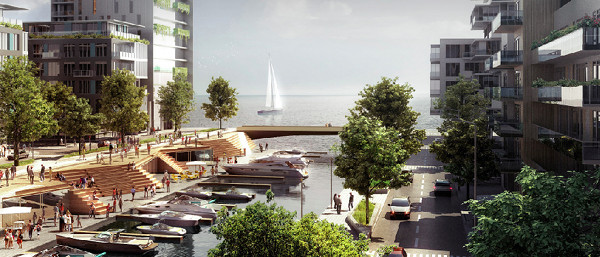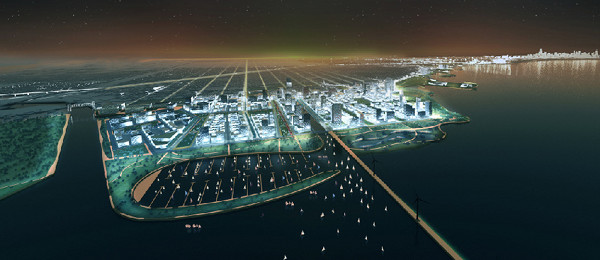Billed as “a game-changing urban ideal for not just Chicago’s Southeast lakefront, but for the entire region,” the plan for Chicago’s Lakeside Development will turn the site that was once America’s largest steel mill into the most connected and transit-oriented location in North America, including a 91-acre lakeside park, mixed use development and community co-generation. The Chicago Lakeside Development is a big green vision for what is currently a giant brownfield site, and it recently won the has won the first-ever Sustainia Community Award.
Sustainia is an alliance focused on creating a global platform for communicating, envisioning and building a sustainable future, and in keeping with that focus, the winner of the award was chosen via the organization’s large social media network. Sustainia’s inaugural Community Award was presented to Chicago Lakeside Development — a joint venture betweenMcCaffery Interests and U.S. Steel Corporation — by none other than Gov.Arnold Schwarzenegger during a ceremony at the Royal Theater in Copenhagen. According to the global alliance, the inaugural Sustainia Community Award “honors the best sustainable solution.”

The Master Plan for the Chicago Lakeside Development was created by Skidmore, Owings and Merrill in conjunction with Sasaki Associates and Antunovich Associates. It calls for 13,575 new homes, 17,500,000 square feet of retail and commercial space, a new high school, a 1500-slip marina, and 125 acres of new park lands. The project is a certified LEED-Neighborhood Development and will incorporate innovative green features such as a stormwater management system that will filter runoff to recharge Lake Michigan.
One of the most interesting elements of the plan is a dedicated neighborhood utility system — the first of its kind — that will power, heat, and cool the development. This feat will be accomplished through a combination of sewage heat, biogas, biomass, and natural gas, as well as rooftop solar, wind turbines and cogeneration from waste heat, while lakewater and groundwater will be put to work in keeping buildings cool. By building green from scratch, as well as by recycling and reusing water and waste, the development seeks to eliminate waste sent to landfills.
Visions for the 76-acre land parcel include the construction of a mixed-used development identified as The Market Common, an 800,000-square-foot project featuring retail, restaurants, entertainment venues and residential units.

Additionally, a living lab — part of the development’s innovation district — will establish prototypes and promote innovative solutions for energy, water, waste and technology.
A new 91-acre lakefront park dedicated to the Chicago Park District will provide 1.7 miles of additional lakefront access, and 35 acres of open space will be dedicated to an extensive system of neighborhood parks – Ore Wall Park, Central Park and Finger Parks – which will create areas for gardens, jogging, walking, playgrounds, sculptures and general enjoyment.
New retail and commercial spaces are envisioned as creating permanent jobs, and, in combination with increased lakefront access, as pulling mass transit east, even as increased housing density in the area pulls mass transit south.
With approval from the Chicago Plan Commission, the Lakeside project has begun construction on Phase 1 of the development, which will see 800,000 square feet of retail, restaurants, office space and new residences go up over 76 acres. The entire Chicago Lakeside Development will take 25-45 years to completely develop.